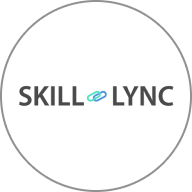Modified on
Exploring Advanced Signal Routing and Control in Simscape

Skill-Lync
Welcome back to the Physical Modeling in Simscape with Simulink & MATLAB blog series! In this session, we’ll dive deeper into signal routing techniques and controlled voltage sources to explore the behavior of electromechanical systems under varying conditions.
This blog is a continuation of Skill-Lync Simscape Training and focuses on simplifying subsystem connectivity and simulating real-world scenarios using Simscape basics.
Signal Routing Using From and Goto Blocks
Managing complex models often involves routing signals between subsystems. The Goto and From blocks in Simulink are invaluable for this purpose:
Setting Up Goto Blocks:
- Use a Goto block to send signals like speed and torque from a subsystem to the main model.
- Assign unique tags (e.g., Speed and Torque) to identify each signal.
Receiving Signals with From Blocks:
- Use From blocks to receive these signals in the main model.
- Ensure the tag names match exactly, including capitalization.
Global vs. Local Visibility:
By default, tags have local visibility, limiting them to the subsystem. Change the visibility to Global to make them accessible across the model.
Adding a Controlled Voltage Source
In many real-world systems, voltage varies dynamically based on operating conditions. To simulate this:
Replace the DC Voltage Source:
- Replace the fixed voltage source with a controlled voltage source.
- Use a ramp block to simulate a gradual increase in voltage over time.
Configuring the Ramp Block:
- Set the slope to 10020=5\frac{100}{20} = 520100 =5, ensuring the voltage rises from 0V to 100V over 20 seconds.
Connecting the Controlled Voltage Source:
Add a Simulink to Physical Signal Converter to interface between the ramp block and the voltage source.
Simulating with Variable Voltage
Exponential Speed Increase:
As the voltage increases linearly, the fan speed rises exponentially due to the relationship between speed and torque.
Analyzing Torque Behavior:
Torque remains relatively constant as speed increases, highlighting the aerodynamic characteristics of the fan.
Improved Visualization:
Label signals directly on the scope (e.g., Speed, Torque, Current) for better clarity.
Key Learnings
Impact of Voltage Variation:
Controlled voltage sources allow for a more realistic simulation of dynamic operating conditions.
Signal Routing:
Efficient use of Goto and From blocks simplifies the management of complex subsystems.
Subsystem Organization:
Use Simulink’s Auto Arrange feature to improve the readability of your model.
Conclusion
In this blog, we explored advanced techniques for signal routing and control in Simulink, enabling you to simulate more realistic scenarios. The combination of Simscape modeling examples and efficient signal management is crucial for building complex electromechanical systems.
To learn more about physical modeling and simulation, join Skill-Lync’s Full Course on Simscape. From Simscape mechanical systems tutorial to Simscape motor control, this course equips you with the skills to tackle real-world engineering challenges.
Stay tuned for the next blog, where we’ll explore multi-domain modeling and parameter tuning in Simscape!
This blog is part of our ongoing Physical Modeling in Simscape with Simulink & MATLAB. If you missed the previous posts, check them out here.
Would you like to have a more interactive experience in Physical Modeling?
Skill-Lync has released a FREE comprehensive course covering Physical Modeling in Simscape with Simulink & MATLAB! Check it out here.
Check out our hands-on course today and add it to your list of skills!
Let’s get #IndustryReady together, one skill at a time!
Author
Uma Maheswari K
Author

Skill-Lync
Subscribe to Our Free Newsletter

Continue Reading
Related Blogs
Explore the fundamentals of vehicle dynamics and ultimate trends in the field from design and modeling to control with Skill Lync's exclusive course on the subject. Read about how Skill-Lync's CAE courses can help you get employed.
28 Jul 2020
In this article, we will briefly discuss the working, applications, and features of the one-dimensional systematic simulation tool, GT-Power, in Emission Control Strategy, engine calibration, hybrid vehicle modeling. Read about how Skill-Lync's CAE courses can help you get employed.
28 Jul 2020
This article offers a brief introduction to the globally accepted standard of Geometric Dimensioning and Tolerancing, and its importance for the entire manufacturing process. Read about how Skill-Lync's CAE courses can help you get employed.
28 Jul 2020
In this blog we will read about Going a step into Biomechanics and how Skill-Lync's CAE course will help you get employed.
09 May 2020
The powertrain is the most prominent source of vibrations that affects the driving experience for the people on board. This blog from Skill-Lync examines these vibrations to help enhance that experience.
21 Aug 2020
Author

Skill-Lync
Subscribe to Our Free Newsletter

Continue Reading
Related Blogs
Explore the fundamentals of vehicle dynamics and ultimate trends in the field from design and modeling to control with Skill Lync's exclusive course on the subject. Read about how Skill-Lync's CAE courses can help you get employed.
28 Jul 2020
In this article, we will briefly discuss the working, applications, and features of the one-dimensional systematic simulation tool, GT-Power, in Emission Control Strategy, engine calibration, hybrid vehicle modeling. Read about how Skill-Lync's CAE courses can help you get employed.
28 Jul 2020
This article offers a brief introduction to the globally accepted standard of Geometric Dimensioning and Tolerancing, and its importance for the entire manufacturing process. Read about how Skill-Lync's CAE courses can help you get employed.
28 Jul 2020
In this blog we will read about Going a step into Biomechanics and how Skill-Lync's CAE course will help you get employed.
09 May 2020
The powertrain is the most prominent source of vibrations that affects the driving experience for the people on board. This blog from Skill-Lync examines these vibrations to help enhance that experience.
21 Aug 2020
Related Courses
